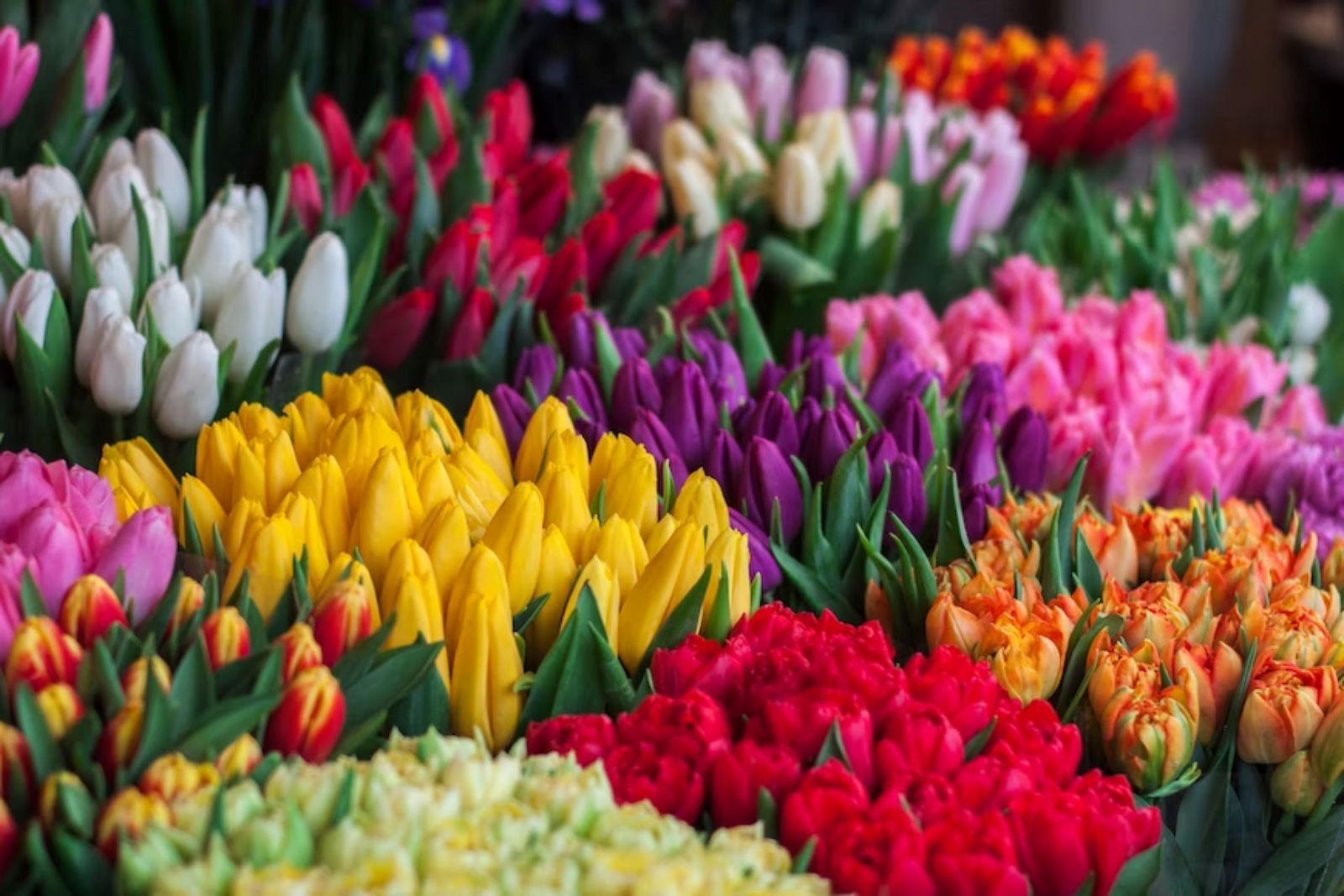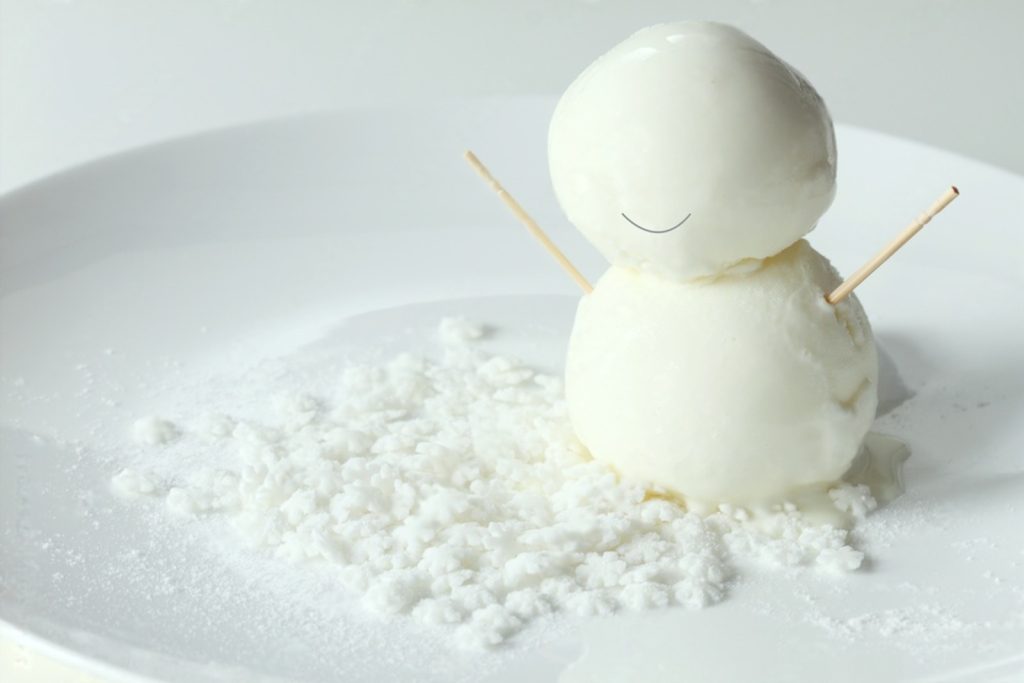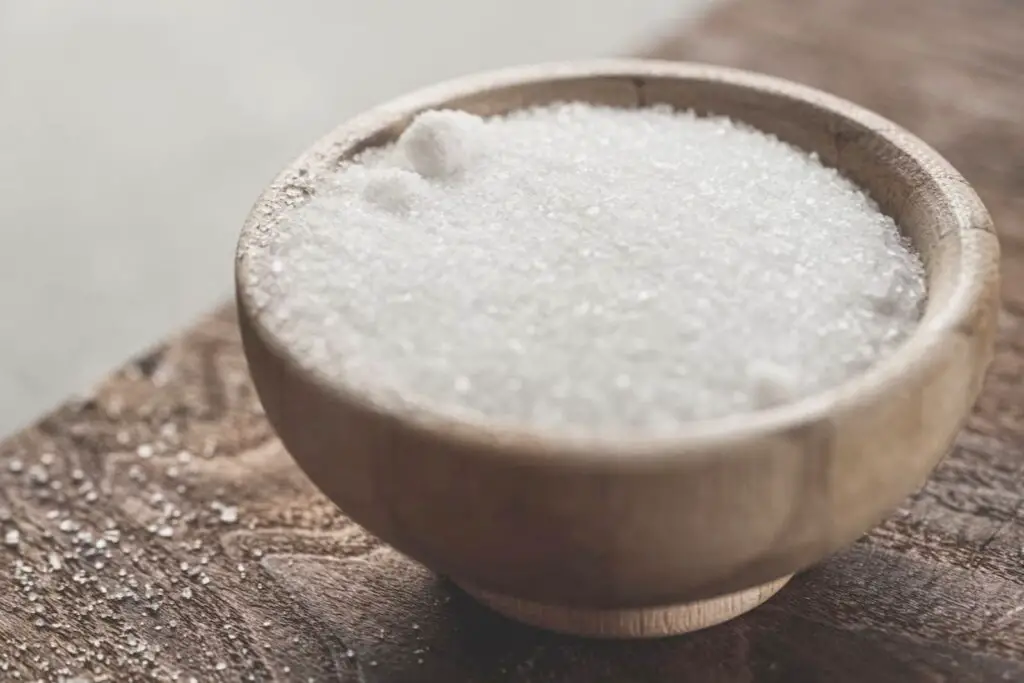
Flowers are reproductive structures found in flowering plants, also known as angiosperms. They typically consist of colorful petals, a central part called the pistil that contains the female reproductive organs, and stamens that bear the male reproductive organs. Freezing flowers is an excellent way to preserve their beauty and extend their lifespan. Whether you have received a stunning bouquet or want to save blooms from your garden, freezing them properly will help retain their color and shape. In this process, it is crucial to select fresh flowers, remove any excess foliage, choose the right freezing method, and store them carefully. With these steps, you can enjoy the beauty of your frozen flowers for months to come.
Here are the simple steps to freeze flowers:
Step 1: Choose fresh flowers
When freezing flowers, it is essential to start with blooms that are at their peak freshness. Selecting fresh flowers ensures that they will retain their vibrant colors and structural integrity during the freezing process. Fresh flowers have sturdy petals that are less likely to become limp or discolored when frozen.
Wilted or decaying flowers should be avoided because they are already in a state of deterioration and will not freeze well. These flowers may lose their vibrant colors, become mushy, or even develop mold during freezing. To achieve the best results, it is crucial to work with flowers that are in their prime condition, displaying vibrant hues and firm petals.
Can I freeze any type of flower?
While many flowers can be successfully frozen, it’s important to note that some delicate or highly moisture-sensitive flowers may not freeze well. It is best to choose flowers with sturdy petals that can withstand the freezing process without losing their shape or color.
What are the best flowers for freezing?
When it comes to freezing flowers, certain types are more suitable for preservation than others. Flowers with sturdy petals, such as roses, carnations, and marigolds, tend to freeze well and maintain their shape and color. Other popular choices for freezing include lavender, baby’s breath, and hydrangeas, as they can retain their beauty even after the freezing process. However, it’s important to note that delicate flowers with high moisture content, like tulips or orchids, may not freeze as successfully.
Can I freeze flowers with buds or only fully bloomed flowers?
When it comes to freezing flowers, it is generally recommended to freeze fully bloomed-flowers rather than buds. Fully bloomed flowers have a more developed cellular structure, which allows them to better withstand the freezing process. Buds, on the other hand, may not freeze as successfully and can be more prone to damage or failure to fully open after thawing.
Step 2: Remove excess foliage
When preparing flowers for freezing, it is important to remove any excess foliage from the stems. Leaves and foliage have a higher water content compared to the blooms, and they can wilt or deteriorate faster during the freezing process. By eliminating the foliage, you ensure that the flowers receive the most attention and care during freezing.
Leaves and foliage can also take up unnecessary space in the freezer and may interfere with the overall presentation of the frozen flowers. Removing them allows the focus to be on the blooms themselves, showcasing their natural beauty when they are eventually thawed and displayed.
By keeping only the stems and blooms, you streamline the freezing process and optimize the preservation of the flowers. This step helps maintain the quality and appearance of the blooms, ensuring that they remain visually appealing and intact throughout the freezing and thawing process.
Step 3: Choose the suitable freezing method
When it comes to freezing flowers, selecting the appropriate freezing method is crucial for achieving the best results. Two common methods are air-drying and using silica gel. Each method is suitable for different types of flowers based on their petal strength and delicacy.
Air-drying is an ideal method for flowers with sturdy petals, such as roses or marigolds. This method involves hanging the flowers upside down in a cool, dark place with good air circulation. As the flowers dry naturally, the moisture evaporates, resulting in preserved blooms with retained color and shape. See step 4 to know more details about this process.
On the other hand, delicate flowers like daisies or lilies are better preserved using silica gel. Silica gel is a desiccant that absorbs moisture, making it an effective tool for drying and preserving the delicate petals of these flowers. The flowers are carefully placed in an airtight container with layers of silica gel, allowing the gel to absorb the moisture from the blooms over time. To enhance your knowledge about this method, proceed to step 5 for further details.
Step 4: Air-drying method
The air-drying method is an effective way to freeze flowers with sturdy petals, such as roses or marigolds. This method involves a simple process to allow the flowers to naturally dry and preserve their beauty.
To begin, gather a small bunch of flowers and secure them together using a string or rubber band. This arrangement helps keep the flowers organized and prevents them from tangling or becoming misshapen during the drying process.
Next, hang the bundled flowers upside down in a cool and dark area with good air circulation. This location can be a closet, a dry basement, or any place where the temperature and humidity are controlled. Hanging the flowers upside down allows gravity to aid in maintaining the shape and structure of the blooms as they dry.
It’s important to provide adequate air circulation to prevent the flowers from developing mold or rot. Good airflow helps facilitate the evaporation of moisture from the petals, resulting in properly dried flowers.
The drying time can vary depending on the type of flowers and the ambient conditions. It typically takes a few days to a couple of weeks for the flowers to dry completely. Patience is key during this process, as rushing it may result in improperly dried flowers that lose their color or become brittle.
Step 5: Silica gel method
The silica gel method is a recommended approach for freezing delicate flowers like daisies or lilies. Silica gel is a desiccant that effectively absorbs moisture, allowing for the preservation of the flowers’ delicate petals.
To begin, prepare an airtight container that is large enough to accommodate the flowers you wish to freeze. Pour a layer of silica gel into the container, creating a bed for the flowers. The layer should be deep enough to ensure that the flowers will be completely covered by the gel.
Next, carefully place the flowers upright in the container, making sure that they don’t touch each other or the sides of the container. This arrangement prevents the flowers from sticking together or becoming damaged during the preservation process.
Once the flowers are in place, slowly pour more silica gel over them, ensuring that every part of the flowers is covered. The silica gel acts as a drying agent, absorbing moisture from the flowers while maintaining their delicate structure.
After the flowers are completely covered with silica gel, seal the container tightly to create an airtight environment. This step prevents moisture from re-entering the container and affecting the drying process.
Leave the container undisturbed in a cool, dry place for approximately one to two weeks. During this time, the silica gel absorbs the moisture from the flowers, drying them out thoroughly.
The drying time can vary depending on factors such as flower type, size, and ambient humidity. It is important to exercise patience and allow sufficient time for the flowers to dry completely.
Step 6: Store the frozen flowers
After the flowers have undergone the drying process, it is essential to store them properly to maintain their frozen state and quality. Here’s how to store the dried flowers for long-term preservation:
Place the dried flowers gently into an airtight container or a freezer bag. The container or bag should be clean and free of any moisture to prevent freezer burn or deterioration of the flowers.
Label the container or bag with the type of flowers and the date of freezing. This step helps you keep track of the contents and ensures that you can easily identify them later.
If using a freezer bag, squeeze out as much air as possible before sealing it. Removing excess air helps prevent freezer burn and maintains the flowers’ integrity during storage.
Ensure that the container or bag is sealed tightly to create a proper barrier against moisture and air. This step is crucial to preserve the frozen flowers and prevent them from absorbing any unwanted odors.
Finally, place the labeled and sealed container or bag in the freezer. The freezing temperature will maintain the flowers in their frozen state, preserving their appearance and quality.
Other related questions
How long can frozen flowers be stored?
When properly stored, frozen flowers can last for several months. The duration of their storage life will depend on factors such as the flower type, the freezing method used, and the storage conditions. Generally, frozen flowers can maintain their quality for 6 to 12 months in the freezer. However, it is important to note that over time, the color and texture of the flowers may slightly change.
How should I thaw frozen flowers?
To defrost flowers, it is important to follow a careful process. Start by removing the frozen flowers from the freezer and placing them in a cool environment to gradually thaw. Avoid exposing them to direct sunlight or high temperatures. Allow the flowers to thaw naturally, maintaining their moisture and delicate structure, before using or arranging them. Avoid using warm water or microwaving the flowers, as this can lead to wilting or damage to the petals.
Can I refreeze flowers?
Refreezing flowers is generally not recommended. Once flowers have been thawed, their cellular structure and moisture content may have changed, making them more susceptible to damage and deterioration if refrozen. It is best to enjoy the flowers after the initial thawing and avoid subjecting them to additional freeze-thaw cycles. To maximize the lifespan and quality of flowers, it is advisable to freeze them only once and thaw them when ready for use.
How do I know if the flowers have gone bad after being frozen?
Determining if flowers have gone bad after being frozen involves several indicators. Look for signs such as changes in color, texture, or appearance, including wilting, browning, or the presence of mold. Additionally, a noticeable loss of fragrance or unpleasant odors may suggest spoilage. If the flowers show any of these signs, it is advisable to discard them, as their quality and freshness have likely deteriorated.
Can I freeze flowers in water?
Freezing flowers in water is not recommended as the water expands when frozen, which can cause the cells of the flowers to rupture. Removing excess moisture from the flowers before freezing them is best to maintain their quality and prevent damage.
Is it necessary to treat flowers with a preservative solution before freezing?
Treating flowers with a preservative solution before freezing is not necessary. Preservative solutions are typically used to extend the vase life of fresh flowers by providing nutrients and inhibiting bacterial growth. However, in the case of freezing flowers, the preservation process itself helps maintain their appearance and quality, making the use of preservative solutions unnecessary. It is more important to focus on proper handling, drying, and storage techniques to ensure optimal results when freezing flowers.
Are there any special considerations for freezing large flowers or flower arrangements?
When freezing large flowers or flower arrangements, there are a few special considerations to keep in mind. Firstly, it is advisable to disassemble the arrangement and freeze individual flowers or smaller clusters to ensure even freezing and easier storage. Secondly, larger flowers may require additional drying time to remove excess moisture before freezing. Lastly, consider the size and shape of the container or bag used for freezing to accommodate the larger flowers or arrangements properly.
Can I freeze flowers that have been previously treated with pesticides or chemicals?
Freezing flowers that have been previously treated with pesticides or chemicals is generally not recommended. The freezing process does not eliminate the effects of pesticides or chemicals on the flowers, and residues may remain on the petals or stems. It is best to choose flowers that have not been treated with pesticides or chemicals if you plan to freeze them for long-term preservation.
Can I freeze flowers that have been dyed or artificially colored?
Freezing flowers that have been dyed or artificially colored is possible, but it may affect the appearance and integrity of the flowers. The freezing process can cause the colors to fade or bleed, resulting in a less vibrant and natural-looking final product. It is advisable to test a small sample of the dyed flowers before freezing a larger batch to assess the impact on color and overall quality.
Are there any specific tips for freezing flowers for use in floral arrangements or crafts?
When freezing flowers for use in floral arrangements or crafts, there are several tips to consider. Firstly, freeze individual flowers or smaller clusters rather than entire arrangements for easier handling and storage. Secondly, wrap the flowers carefully in plastic wrap or parchment paper to protect their delicate petals and prevent them from sticking together. Lastly, label and date the frozen flowers to keep track of their storage time and ensure they are used within their optimal lifespan for the best results in arrangements or crafts.
How can I ensure that frozen flowers maintain their fragrance when thawed?
Maintaining the fragrance of frozen flowers when thawed can be challenging as freezing can affect their scent. However, there are a few tips to help preserve some of the fragrance. Firstly, choose flowers known for their strong scent, such as roses or lavender, as they are more likely to retain some fragrance. Secondly, store the frozen flowers in airtight containers or bags to minimize any loss of aroma. Lastly, consider adding dried aromatic herbs or flower petals to the arrangement or display when using thawed flowers to enhance the overall fragrance.








